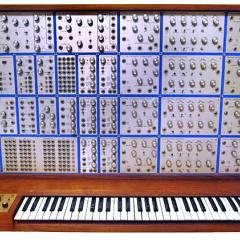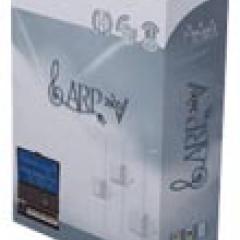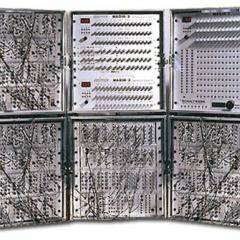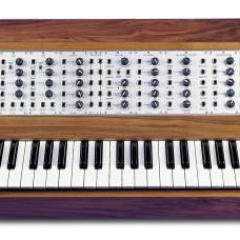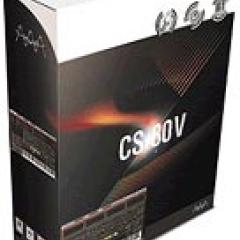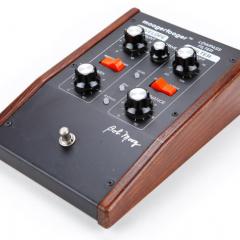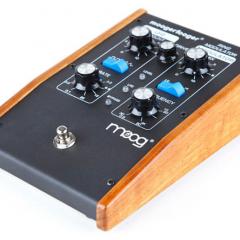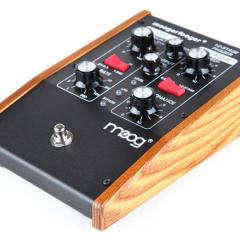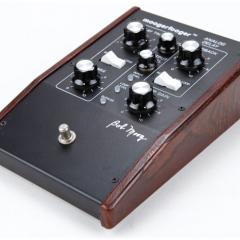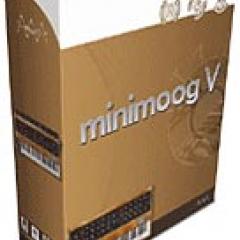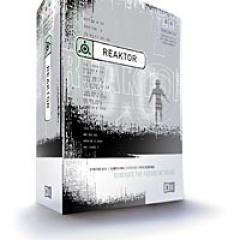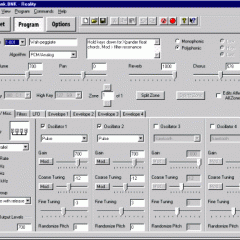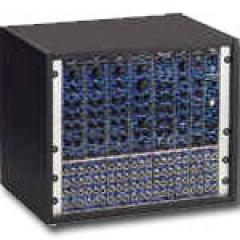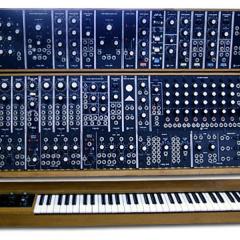Arturia Moog Modular V
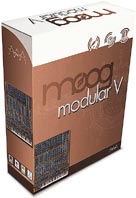
Arturia's Moog Modular V is an excellent and affordable way to experience the classic Modular Synthesizer. In short, modular synthesis was the birth of analog (and eventually digital) synthesis in which various task specific "modules" were linked together to create musical sounds. One module may consist of an oscillator, another may be the filter, an effect, an LFO, etc. Users would patch cables between them to route a signal from module to module in an effort to create musical sounds.
One of the absolute fathers of modular synthesizers was Moog's behemoth Modular series, and now Arturia has created a virtual synth based on the classic Moog series. The look, sound, feel, and experience have been emulated and improved upon here in Arturia's Moog Modular V, which is available for all popular soft-synth formats for Mac and PC (VST, DXi, Audio Units, MAS, RTAS, HTDM, and more).
Arturia uses "TAE" - True Analog Emulation to create a nice and warm and very close re-creation of the original Moog sound. It virtually eliminates any 'aliasing' caused by digital oscillators and even creates some of the instabilities associated with a genuine 'analog' sound. The MMV was developed with help from Bob Moog himself to insure an accurate recreation.
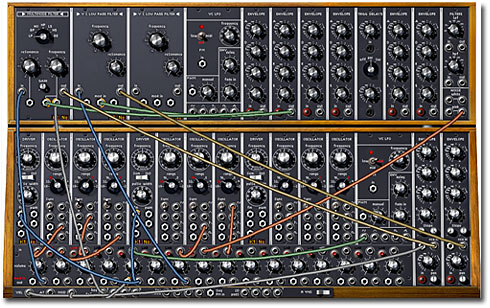
An original Moog Modular, though antique and hard to maintain and afford these days, was ultimately more customizable than this new soft-synth. Users could pick and choose which modules they wanted to install in their Moog's wooden cabinets, but Arturia's MMV comes with a pre-determined set of modules which can't be swapped out or changed, unfortunately. In fact, the MMV itself does not represent any particular modular system originally released by Moog either (such as the Moog 3P or 55), and rather comes with a collection of all-around useful modules selected from among Moog's history of modular synthesizers.
These modules include: 9 oscillators, 3 filter slots, 2 LFOs, 6 envelopes, VCAs, mixers, triggers, a 3x8 step-sequencer, etc. Patching is very much like the original method, but is color-coded for easier visual navigation. When you start drawing a patch, it's possible destinations are indicated on-screen too, and the cables will wobble, bounce and move out of the way of the mouse as you navigate. Unlike the original, you can also connect any output to multiple inputs for greater flexibility.
The nine oscillator modules are modeled after the Moog 921a and 921b oscillators which offer simultaneously available sine, triangle, sawtooth, and pulse waveforms. White and Pink noise is also available, based on the Moog 923 module. The three independent filter modules offer lowpass, highpass, filter coupler (band pass), and a new resonant multi-mode configuration. They sound great, although not quite the same as the original Moog, especially at high resonant frequencies. Additionally there's a filter bank modeled after the Moog 914 Filter bank, with 9 adjustable frequency bands (sort of a graphic/parametric EQ). There are 6 Aux ADSR envelope generators modeled after the Moog 911 envelopes as well as two main ADSR envelopes for the output amplifiers.
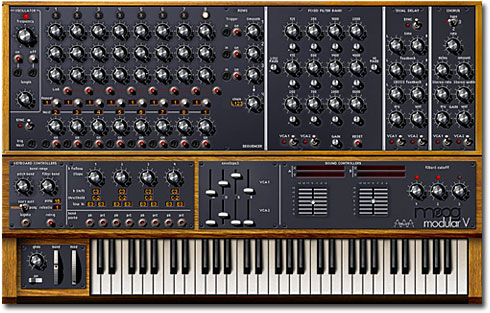
It is within this first window (pictured at top) that you can see, edit and patch all the modules responsible for creating and shaping your sounds. The second window (above) shows the step sequencer, effects sections, virtual keyboard, and any quick access global controllers. The sequencer is modeled after the Moog 960 sequencer module, with three rows of 8 steps (24 steps total); it's like three independent 8-step sequencers. Each row has it's own outputs and trigger inputs. The sequencer can be used to control the oscillators, envelopes, filters, etc. for very creative and animated sounds.
Above the virtual keyboard are some very cool controllers such as two X-Y Sound Controller joysticks, 3 Filter Cutoff knobs and two ADSR controls for the two main VCA's, and a flexible Keyboard Controller section to adjust pitch bend and modulation ranges and keyboard followers. These allow you to split or layer the keyboard zones, adjust and transpose tunings, and utilize portamento and legato effects. The effects offered are new (never available on the original Moog) and include a flexible Dual Delay and Stereo Chorus.
Additional modern day features include MIDI implementation, non-drifting oscillators and plenty of patch memory storage. In fact, the MMV ships with over 400 patches created by experienced sound designers and also has several template patches to get you started making your own patches! Although not a totally accurate re-creation of a particular Moog Modular, Arturia's MMV does emulate the look, feel, sound - the experience - of using a Moog Modular with modern day features quite well. And don't forget, it is endorsed by Bob Moog himself! It's the perfect tool for anyone interested in these classic machines or anyone wanting to learn about how synthesizers and all their individual components work together to create sounds.
Demos & Media

Specifications
Resources
Images from Arturia.
